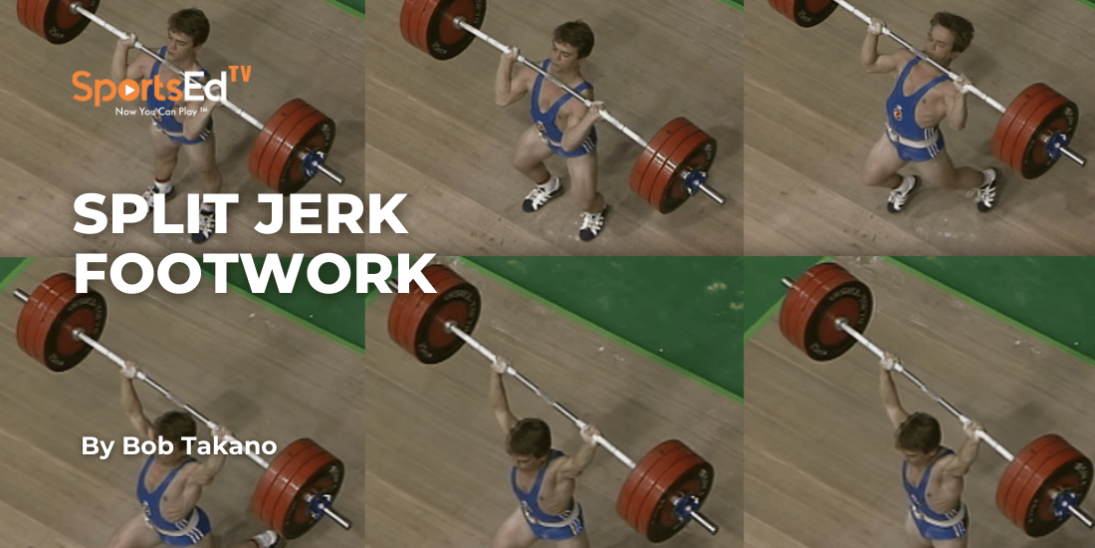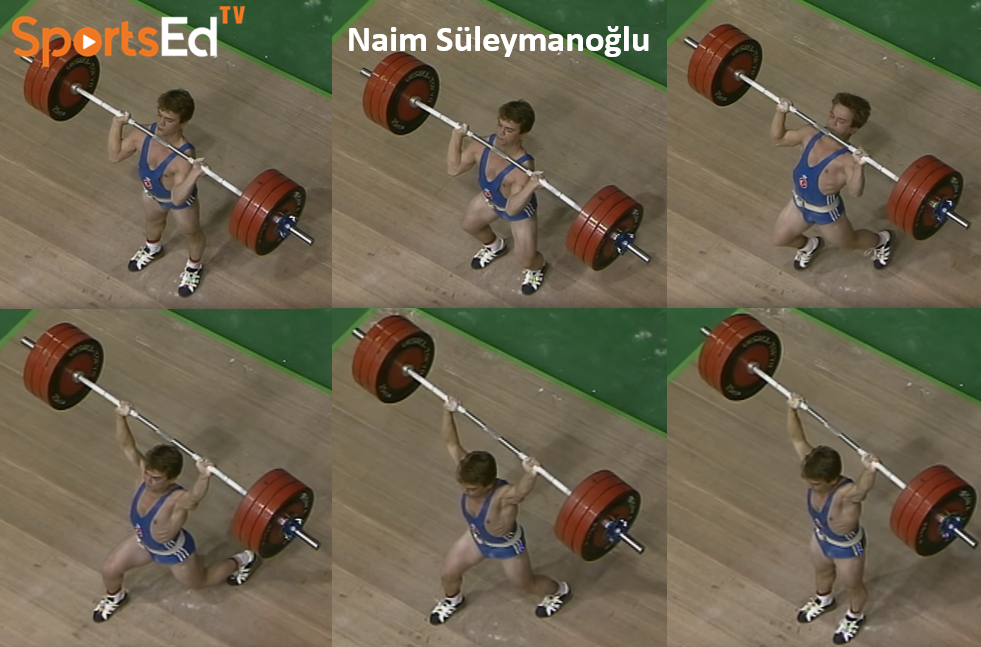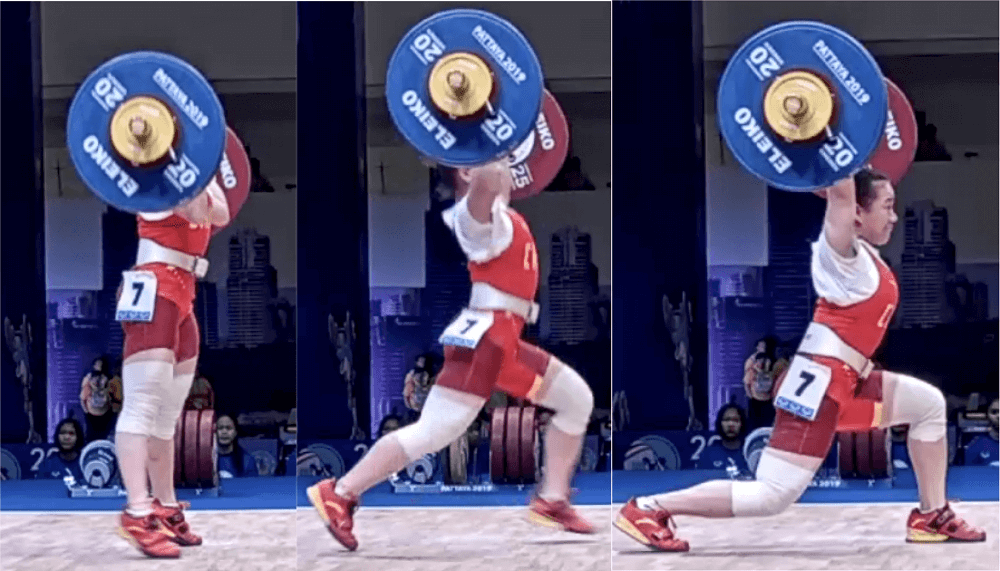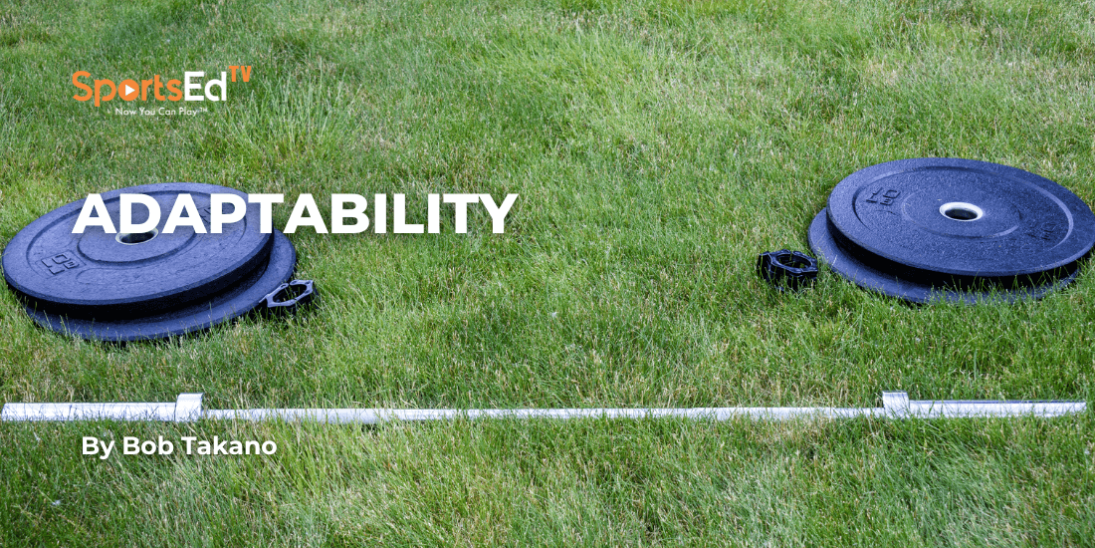Weightlifting
Welcome and thanks for visiting...

Mastering Split Jerk Footwork for Maximum Success

Many split jerks are lost due to faulty footwork. Despite the importance of proper foot positioning, there are very few articles, blog posts, or videos that focus on this critical aspect of weightlifting. However, a lack of proper footwork is a common cause of missed jerks.
In this article, we will cover key footwork principles that can help lifters improve their split jerk and achieve a higher percentage of successful lifts.

1. The Feet Move After Full Plantar Flexion
One of the most common mistakes lifters make is moving their feet prematurely. This means that the full force of the jerk drive is not achieved, reducing the effectiveness of the lift.
Key Tip: Move the feet immediately after the ankles achieve full plantar flexion, when the balls of the feet are pressing into the platform. Delaying movement until this moment ensures maximum power transfer.
2. Both Feet Must Move Simultaneously
A little-discussed yet critical point is that both feet must move into the split at the same time. Because of an optical illusion that makes it appear as though the rear foot is moving farther, some lifters mistakenly begin rear foot movement too early.
Key Tip: Focus on simultaneous movement of both feet to ensure a balanced split position.
3. Both Feet Must Move the Same Distance
For a properly executed split jerk, the weight must be evenly distributed between the front and rear foot. Achieving this balance requires both feet to move the same distance.
However, many lifters struggle because the bar’s pathway is slightly forward relative to the vertical axis of the body. The next point addresses how to fix this alignment issue.
4. Both Feet Do Not Strike Simultaneously
To align the bar pathway with the vertical axis of the torso, the timing of footstrikes must be varied. This may seem counterintuitive since both feet move the same distance, but it is achieved through a variation in foot trajectory.
- The back foot should skim the platform before making contact.
- The front foot should prance (elevate) slightly before striking the platform.
This creates a two-step rhythm, where the back foot lands slightly earlier, shifting the torso forward to align with the bar’s path.
5. Medial Rotation of the Legs Increases Traction
Rotating the thighs medially (inward) during the split increases the surface area of the shoe in contact with the platform. This improves traction and prevents foot slippage—one of the main causes of missed jerks.
Key Tip: Ensure that both legs rotate slightly inward to create a stable base and reduce the risk of slipping.

6. Proper Foot Pathway in the Split
When moving into the split, both feet should travel in straight pathways perpendicular to the axis of the barbell. Avoid moving the feet slightly inward, as this reduces the area of balance and can lead to instability.
Key Tip: Keep foot pathways straight and aligned to maintain a solid and balanced split position.
7. How to Recover from the Split Position
If the jerk is performed correctly, the lifter’s balance should be evenly distributed between the front and back foot. The best recovery strategy minimizes bar movement and maintains stability.
Step-by-Step Recovery:
- Lean back slightly and bring the front foot halfway back to its original position.
- Then, move the back foot halfway forward to align with the front foot.
This method ensures minimal horizontal bar movement and helps maintain control throughout the lift.
8. Why This Knowledge Has Been Lost
In earlier generations, lifters frequently used the split snatch and split clean, reinforcing proper footwork techniques. Today, very few athletes use these variations, leading to a decline in footwork expertise for the split jerk.
I am old enough to have competed using the split technique in my first two competitions, and I can pass on this knowledge to lifters struggling with their jerk footwork. By applying these principles, you can significantly improve your jerk success rate and overall weightlifting performance.








